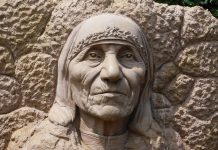Bill Gates, Oprah Winfrey, Elon Musk and Jeff Bezos are just a few examples of dozens of high-impact American entrepreneurs who have become household names. Yet, in our globalized twenty-first century economy, some of the world’s most inspiring entrepreneurs can be found beyond our borders.
Three little-known entrepreneurs in particular are shaping the emerging regions of the world in countries where many American entrepreneurs see tremendous opportunity. So, it is important that today’s emerging entrepreneurs learn about the business pioneers in these once remote corners of the world – regions that recent technology has integrated into the same global economy that we all participate in.
These days, some of the most impactful entrepreneurs alive are leaving their mark not only outside of the U.S. but well beyond the boundaries of the developed world. Among the most remarkable of these individuals is Funke Opeke, a former Verizon executive, educated at Columbia University, who returned to her native Nigeria after living in the U.S. for decades.
Her executive position at Nitel, the country’s now defunct state-run telecommunications provider, was marred by the country’s inadequate infrastructure. Disappointed but determined, Opeke resigned from Nitel and raised over $200 million for her own company, Main One. The latter successfully established an underwater fiber-optic cable connection between Europe and Africa.
By the end of 2010, West Africa, home to some of the world’s fastest-growing economies, had its first broadband connection thanks to Main One. In turn, this has paved the way for foreign e-commerce companies to make inroads into the region while also enabling more domestic high-tech entrepreneurship: “What’s really fulfilling,” Opeke told a Nigerian newspaper in 2014, “is when I see companies like Konga.com and Jumia.com, and educational institutions with access to the Internet, working. Clearly, we have made a difference.”
The Entrepreneurial Takeaway: it is notable that Opeke was well into her forties when she left the telecommunications industry boardroom for the entrepreneurial life. The success of Main One demonstrates that, with enough vision and energy to see something through, one is never too old to establish something new.
2. Wang Chuanfu
By some metrics, China is the world’s largest economy and, by others, it is the second largest. In either case, entrepreneurs throughout the world would be wise to keep an eye on the trailblazers of Chinese enterprise. Among the most impressive of these is Wang Chuanfu, the son of farmers who climbed the entrepreneurial ladder to become China’s wealthiest person.
In 1995, the twenty-nine-year-old chemist caught the entrepreneurial bug. Starting with the equivalent of $500,000 raised from family and friends, he left a steady job at a research institute to co-found BYD (“Build Your Dream”). BYD soon proved that sound engineering, coupled with low-cost labor, could produce cell phone batteries for a price that would extend the Chinese cell phone market beyond the elite to the country’s rapidly expanding middle class.
Notably, BYD gained efficiencies by replacing the expensive automated factory with a lower-tech assembly method involving only one robot and six hundred people. By 2003, BYD had laid claim to almost half of the global mobile phone battery market and began making aggressive forays into the automotive industry, where it is now one of the largest manufacturers of electric vehicles.
To illustrate, in recent years, both the City of London and Long Beach, California have made large purchases of electric buses from BYD. BYD’s success in multiple industries attracted a $232 billion from Warren Buffett’s Berkshire Hathaway in 2008. Today, Chuanfu, the man described by Berkshire’s Vice Chairman Charlie Munger as “a combination of Thomas Edison and Jack Welch”, is estimated to be worth roughly $5 billion.
The Entrepreneurial Takeaway: Chuanfu did not so much invent something new as devise less expensive ways of producing existing products. Like many successful entrepreneurs, he did not “reinvent the wheel.” Instead, he came up with significant efficiency improvements and had the tenacity to bring those improvements to the market.
3. Marcos Galperin
In 1999 a twenty-eight year-old Argentinian was completing his MBA at Stanford and attending a guest lecture presented by John Muse, a private equity professional from Dallas. When Muse concluded his presentation, Marcos Galperin offered to drive him to the airport. Along the way, Galperin sold Muse on his vision for an eBay-like auction platform targeted squarely at the Latin American market.
By the time they reached the airport, Galperin’s MercadoLibre had a commitment of seed capital from Hicks, Muse, Tate, & Furst. By May of 2000, the Buenos Aires-based technology startup had raised over $50 million from the likes of JPMorgan, Goldman Sachs, General Electric, and Spain’s Banco Santander. Once the site went live, responding to the feedback of its users, Galperin shifted MercadoLibre from auctions to more of a fixed-priced model.
Initially, MercadoLibre launched in Argentina and Mexico and MercadoLivre, a Portuguese version, in Brazil. Today, the brand is wildly popular in those countries as well as Venezuela, Colombia, Uruguay, Chile, Peru, Ecuador, Costa Rica, the Dominican Republic, Panama, and Portugal. The company generates over $650 million in annual revenue and Galperin’s net worth currently exceeds $1 billion.
The Entrepeneurial Takeaway: The story of MercadoLibre is one of boldness and focus. How many people would have been bold enough to offer to drive a guest lecturer to the airport and then pitch an idea along the way? On top of that, Galperin had a very clear vision of what he was building and what he intended to accomplish with it long before MercadoLibre ever went live.
Opeke, Chuanfu, and Galperin all took the initiative to identify and address an important unmet need in their respective countries. These were all enormous challenges that few people have the energy and persistence to resolve successfully. That is why these entrepreneurs are just as inspirational as the iconic entrepreneurs that we all know. As Marcos Galperin likes to say, “think big and execute!”
Find a Home-Based Business to Start-Up >>> Hundreds of Business Listings.

















































